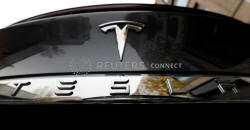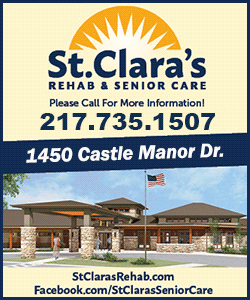U.S. safety board to issue new recommendations in probe
of fatal Tesla Autopilot crash
 Send a link to a friend
Send a link to a friend
 [February 25, 2020] By
David Shepardson [February 25, 2020] By
David Shepardson
WASHINGTON (Reuters) - The National
Transportation Safety Board will hold a public hearing on Tuesday to
establish the probable cause of a fatal March 2018 Tesla Autopilot crash
in California and will issue a series of safety recommendations, two
people briefed on the matter said on Monday.
The safety board is expected to issue recommendations to the National
Highway Traffic Safety Administration (NHTSA), Tesla and a California
transportation agency, the sources said.
The NTSB issued recommendations after other Tesla Autopilot crashes and
planned to reiterate some of the guidance. Tesla did not respond to
requests for comment. The NTSB and NHTSA did not comment ahead of the 1
p.m. meeting.

There are mounting safety concerns about systems that can perform
driving tasks for extended stretches with little or no human
intervention, but cannot completely replace human drivers.
Tesla drivers say they are able to avoid holding the steering wheel for
extended periods while using the driver assistance system Autopilot, but
the company advises drivers to keep their hands on the wheel and pay
attention.
The NTSB, which criticized Autopilot after a 2016 fatal crash in
Florida, also found in September the systemís design permitted a "driver
to disengage from the driving task" in a January 2018 California crash.
Autopilot has been engaged in at least three Tesla vehicles involved in
fatal U.S. crashes since 2016.
Walter Huang, a 38-year-old Apple software engineer, was driving his
Tesla Model X in 2018 in Mountain View, California, in Autopilot mode at
about 70 miles per hour (113 kph) when it crashed into a safety barrier
known as a "crash attenuator."
[to top of second column] |

The company logo is
pictured on a Tesla Model X electric car in Berlin, Germany,
November 13, 2019. REUTERS/Fabrizio Bensch

In September, the NTSB said California should ensure timely repairs of highway
traffic safety equipment. California had failed to repair the attenuator after a
crash 11 days before the one involving Huang. The attenuator is designed to
absorb crash forces before a vehicle hits a concrete median barrier.
Caltrans spokesman Matt Rocco said on Monday the agency "is implementing several
steps to enhance monitoring and tracking of the repair of damage to highway
infrastructure." The efforts include "enhanced reporting on the timely repair of
high priority traffic safety devices."
The NTSB said earlier that Huangís hands were not detected on the steering wheel
in the final six seconds before the fatal crash. There was no evidence of
braking or evasive action. Huang also reported that on prior trips, the car
steered away from the highway requiring his intervention, the NTSB said.
The NTSB said Huang had been using an iPhone and logs recovered show a
word-building game was active during Huangís fatal trip.
The NTSB previously urged the NHTSA to verify automakers using systems like
Autopilot incorporate safeguards to limit their use "to those conditions for
which they were designed."

(Reporting by David Shepardson; Editing by Peter Cooney)
[© 2020 Thomson Reuters. All rights
reserved.] Copyright 2020 Reuters. All rights reserved. This material may not be published,
broadcast, rewritten or redistributed.
Thompson Reuters is solely responsible for this content. |